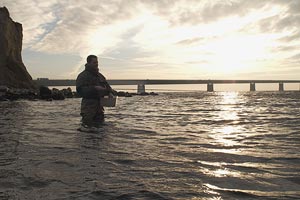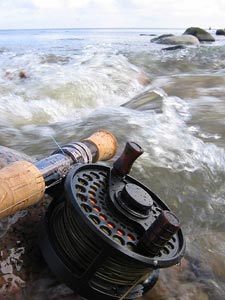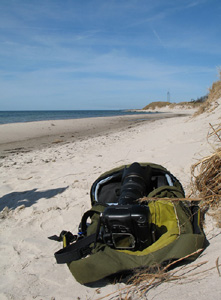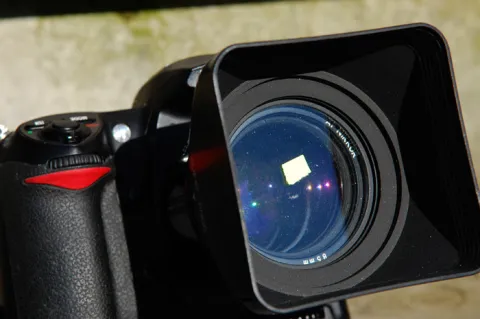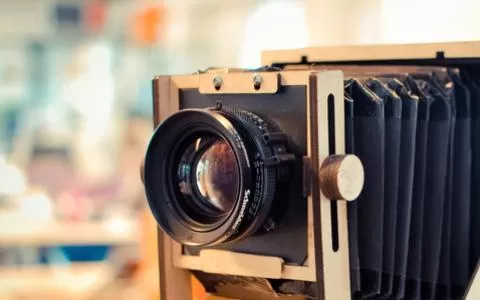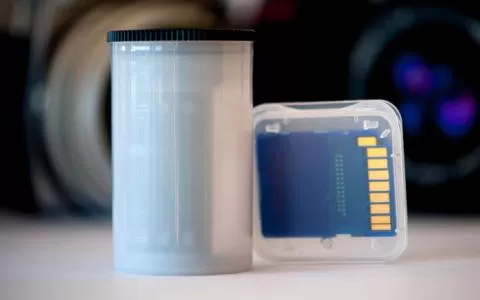Why I find the perils of dust on the digital SLR's sensor vastly overrated
Copper Hill Swipes
I have cleaned the sensor on my 7D a couple of times after this was first written, but only when dust was visible in my images. Typically that will be the case in blue skies or snowy landscapes. On most images dust is not visible unless we're talking whole hairs. I often refer to these as "seagulls" because they are commonly seen on the sky in an outdoors image.
I have used Nicholas' (whose last name I don't remember)
I find the amount and effect of dust on a CCD or CMOS sensor to be highly exaggerated and the ritual of cleaning the sensor a needless passtime of people who spend more time taking pictures of the sky or a white wall at f22 than taking pictures out in "reality".
Below you can see my reactions to a couple of posts on a large digital photo forum. They rather precisely describe what I feel about this issue.
Dust on sensor
> One thing that makes me wonder is the dust on sensor issue: have
> you never experienced this sort of trouble?
I have just passed the 8,500 pictures mark on my Minolta 7D. I mostly take outdoors pictures on sandy beaches, very likely by saltwater and on windy days... and I'm a notorious slob when I change lenses, often leaving the camera open and often putting lenses and camera on the ground without caps.
I have still never seen a persistent visible dust speck on my pictures. I have had a few temporary blurbs, but nothing that lasted. And cleaning them in Photoshop is both faster and safer than wet swiping.
I bought a Copper Hill sensor swipe set, but haven't even opened it yet.
Martin
--
Martin Joergensen, Copenhagen, Denmark
http://500th.net
Should I take the 7D to the beach?
>I know I can keep it out of the sand
>but I'm worried about the salt air and the film
>it leaves on things here in glorious New Jersey.
If you want 7D pictures of the beach and the water, you will have to!
I have sung this song before, and pardon to those who are tired of it, but anyway...
I take a vast majority of my pictures by the water -- sometimes even IN the water (wading in waders) since most of my subjects are people fishing and situations related to fishing.
I'm known to be a notorious slob with my gear, and I have sand in my camera bag, on my camera and most other places it can creep in -- including underwear. That's what you get when you work on a sandy beach. There is little to do about it. As I have said before: I change lenses often and with little care -- not rarely leaving the lenses without caps while I shoot, and often fumbling two lenses and camera -- sans caps.
I take pictures in rain, in salty mist from the waves and I occasionally have wet fingers (yes, saltwater) when I handle the camera. Such is life when you work by and in the ocean.
I have yet to exprience a problem with sand other than the annoyance of it. I have many times blown and dusted sand off my cameras when I got home, but never really had any trouble.
I have actually twice dipped cameras partly in the saltwater! First a Minolta film SLR then a Canon point&shoot. Both died, but revived within days and work fine today.
I know there's a potential problem, and that I will have a crunchy zoom ring or the like some day, but in my opinion the problem is vastly exagerrated.
The issue is very simple: If you want images like the ones on this page, you will have to bring your camera close to sand and saltwater.
> Maybe keep it in
> a plastic bag until I go out?
I do bring large, heavy weight ziplock bags for the gear in case of a real dogs and cats rain, but haven't used them yet. The problem with bags is that situations arrive and pass in seconds, and there is no time to bring out the gear. I usually have the camera around my neck, tucked under the jacket in rough conditions.
Just yesterday I was out with the camera in rainy weather. Just stuck it under my arm while the shower passed. No harm done apart from a few drops on the outside.
Martin
--
Martin Joergensen, Copenhagen, Denmark
http://500th.net
Remember slide scanning?
Do you remember back when we scanned slides?
I usually remind people who moan about dusty sensors of the scanning process:
- Cut your slide
- Frame it
- Wipe and blow it free of dust
- Mount it in the scanner
- Scan it
- Save the file in an appropriate format
- Open it in Photoshop
- Remove the dust using brushes, pipette and stamp tools
And when I write dust, I mean dust! Not like a single spot or a hair, but up to hundreds of scattered dust specks, stray little hairs and even blots or fingerprints. A single image could easily take 10-15 minutes to process and clean. Compare that to a modern digital image. The few specks on those can be cleaned out in seconds and the amount of dust found on even the dirtiest sensor is just a fraction of what you would find on the average slide.
No, sensor dust is a vastly overrated problem in my humble opinion.
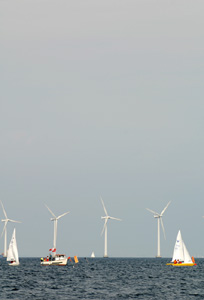
[Nikon D200, 70-200 VR]
Nikon D200 - and no dust
Update January 2008: Since getting myself a Nikon D200 I have shot about 20,000 shots with it, and never cleaned the sensor once apart from a few blows with a friend's Rocket Blower.
Yes, I have had dust and yes I have spent time cleaning off specks in Photoshop, but honestly... the few seconds I spent with the stamp tool is nothing compared to the many minutes I would have had to spend with a dust swipe, optical tissues, tape and Eclipse fluid. I used the
I can repeat myself on end. Cleaning sensors is no big issue in my production cycle, and a sensor cleaning function in the camera should not be the reason for buying it. If it's there, OK, but don't write off a camera because it has no such function.

